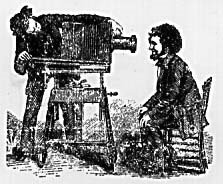Plot-
This graphic novel is more of a memoir than a fictitious story. Marjane “Marji” Satrapi is a young Iranian girl at the beginning of this tale. She is parented by two avant-garde parents, liberal and perspective to their daughter’s unique situation. The fundamentalist party of Iran has just overthrown the existing government, enforcing a strict regime of Islamic practices on the whole nation. Marji is an adept school child with a hunger for knowledge. She reads, listens to her parents’ conversations, and even sneaks into a protest in hopes that she can gleam some information about her fold in history. This first-hand education is made real and dangerous when her beloved uncle is arrested and killed.
In order to escape the persistent situation, Marji’s parents send her to Belgium, to continue her education and live in a peaceful environment. If only it could be that simple. Once in Europe, Marji finds it hard to assimilate and find friends. Not only is she restricted through language, but her culture is discriminated by some very interesting folk, like her boyfriend’s mother. The very thing she was fleeing from is being projected onto her, because of her skin. She eventually makes friends with the marginalized, and experiments with drugs and ideology. After finishing secondary school, Marji feels lost and pulled between her Iranian roots and her present Western environment. She decides to return to Iran, in a burst of homesickness, but her ideal dream is flattened upon arrival. Iran is in much the same state as when she left, with the only major difference being that the streets have been renamed after martyrs. She tries to adjust, but finds it very difficult until she enrolls in art school and marries. This interim doesn’t last long and soon she finds herself wishing for Europe. In the end she returns to her foreign home.
Themes-
Identity crisis, xenophobia
Fundamentalism- assimilation
Knowledge=power
Class struggles (maid’s love, dad’s car)
The Marginalized people
War/ Society against individual
Drawing Style-
Marjane uses wide, rounded images—very soft in nature. Setting the story in the perspective of a nine year old, some of the pictures are very childlike and endearing. As the novels progress, a certain attention to detail grows with Marji. The panels do not have a specific formula such as nine to a page, and often there are full page drawings. Using only black and white, Marjane shows the stark difference in Iran during that time period. Many of the fundamentalists have beards covering their entire mouths and have uni-brows. The dialogue bubbles are much the same throughout the characters, but become jagged when someone screams. Implementing her Islamic background, there are many beautiful patterns and geometric images to structure her panels.
announcements
This blog was created by and for students in an Introduction to Cultural Studies class at the University of Washington. Through an investigation of urban experience and representation--in theory, in graphic novels and in our own "readings" of Seattle's University District--we considered the formation and history of cultural studies as an (anti)discipline, with a special emphasis on the questions, "What does cultural studies do, and how do you do cultural studies?"
If you'd like to know more about the class, the blog or our U-District artifact project, please contact Gabrielle Dean: gnodean@u.washington.edu.
If you'd like to know more about the class, the blog or our U-District artifact project, please contact Gabrielle Dean: gnodean@u.washington.edu.
Monday, May 12, 2008
Subscribe to:
Post Comments (Atom)
blog archive
-
▼
2008
(92)
-
▼
May
(26)
- Seattle U District: City Artifacts Map
- City Artifacts: What and Where?
- Researching History and its Representations...
- Palestine
- Persepolis 1 & 2
- Shutterbug Follies
- A Scanner Darkly
- Maus I & II
- A Scanner Darkly
- Maus I & II
- Shutterbug Follies
- Persepolis 1 and 2
- Postcards: True Stories that Never Happened
- Maus I & II
- Postcards: True Stories that Never Happened
- Persepolis 1 & 2
- Mail Order Bride
- Mail Order Bride: Mark Kalesniko
- Persepolis 1 & 2
- Shutterbug Follies
- Maus I and II
- Palestine
- Postcards: True Stories That Never Happened
- PALESTINE
- Postcards: True Stores That Never Happened
- Shutterbug Follies
-
▼
May
(26)

No comments:
Post a Comment